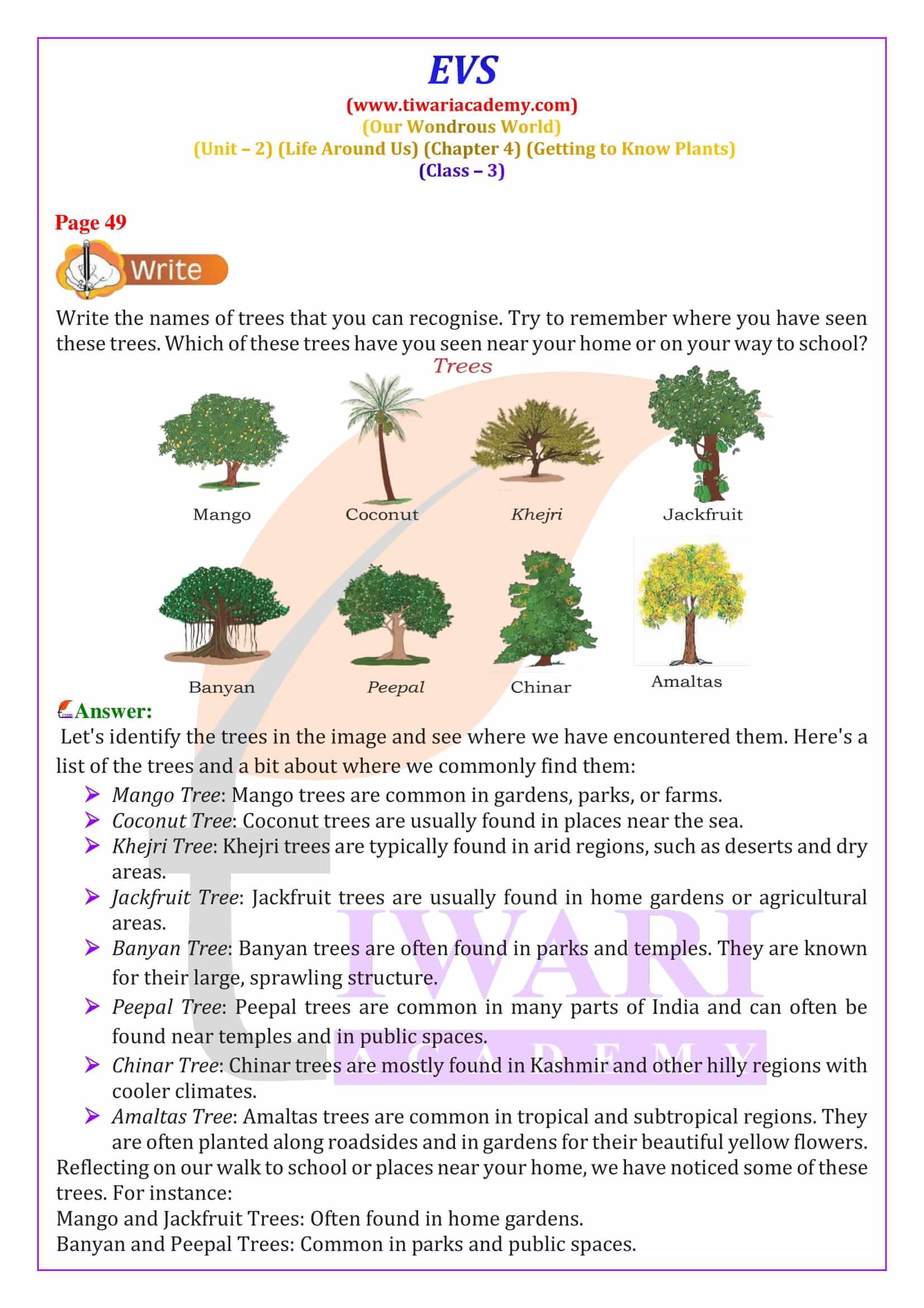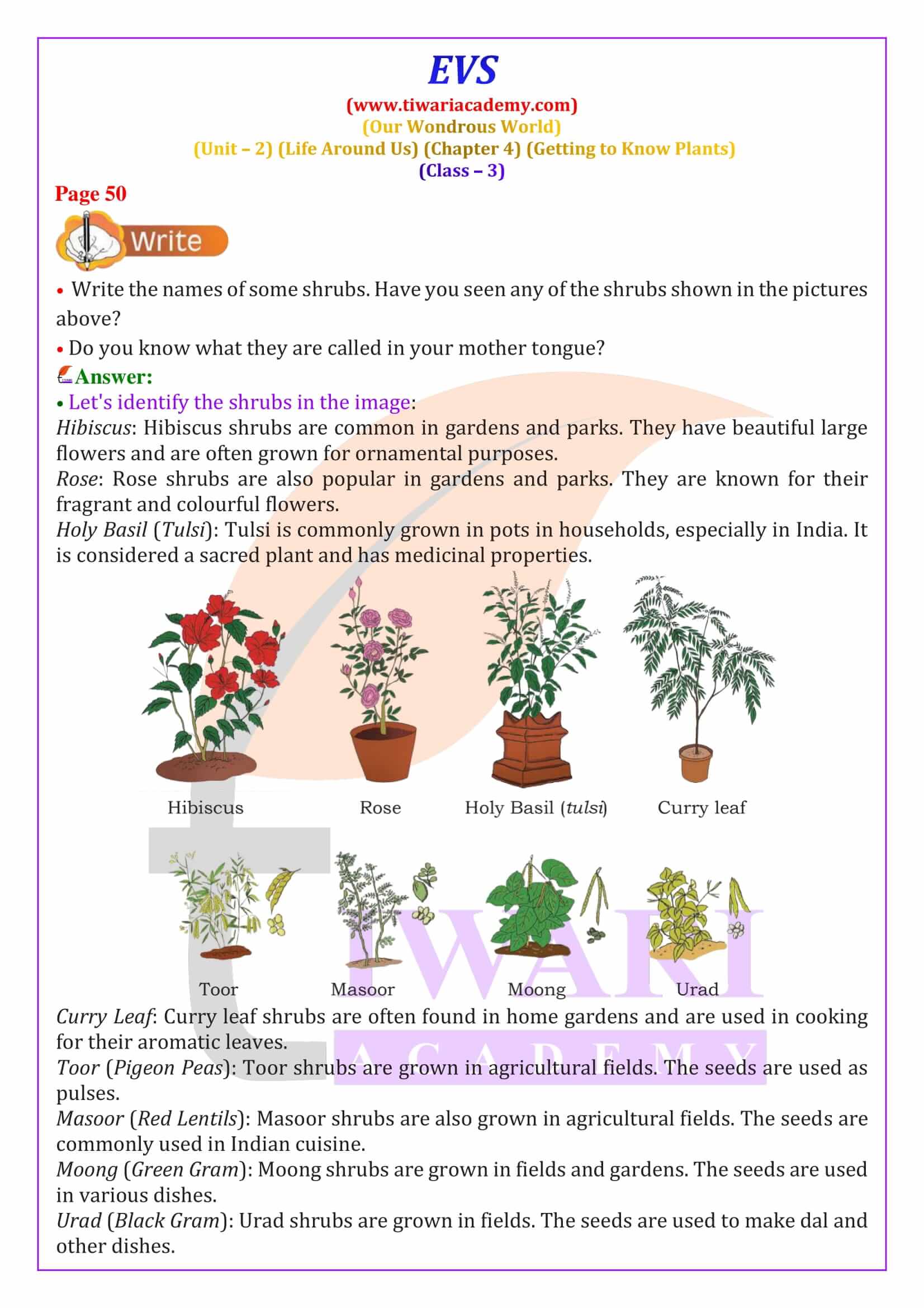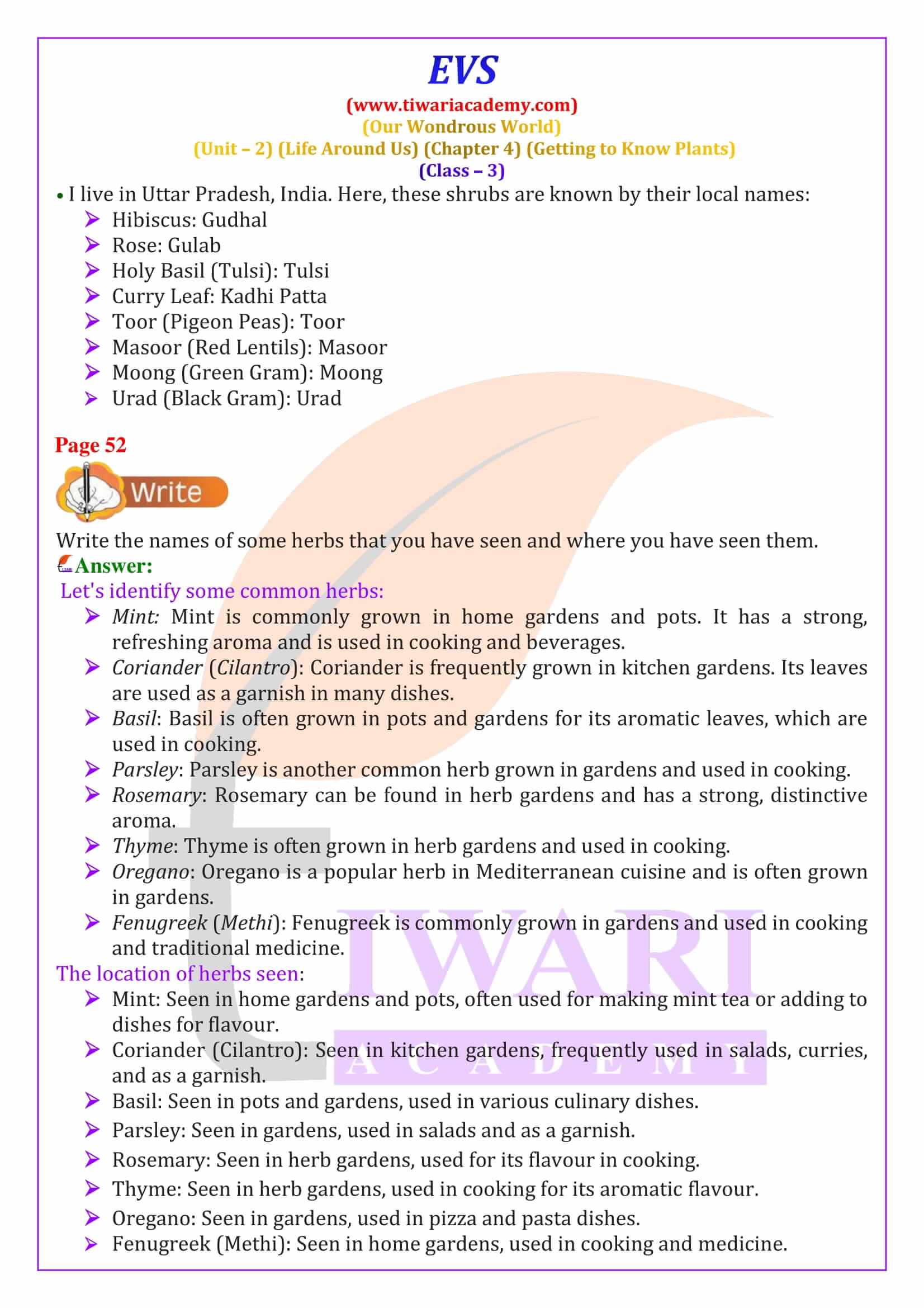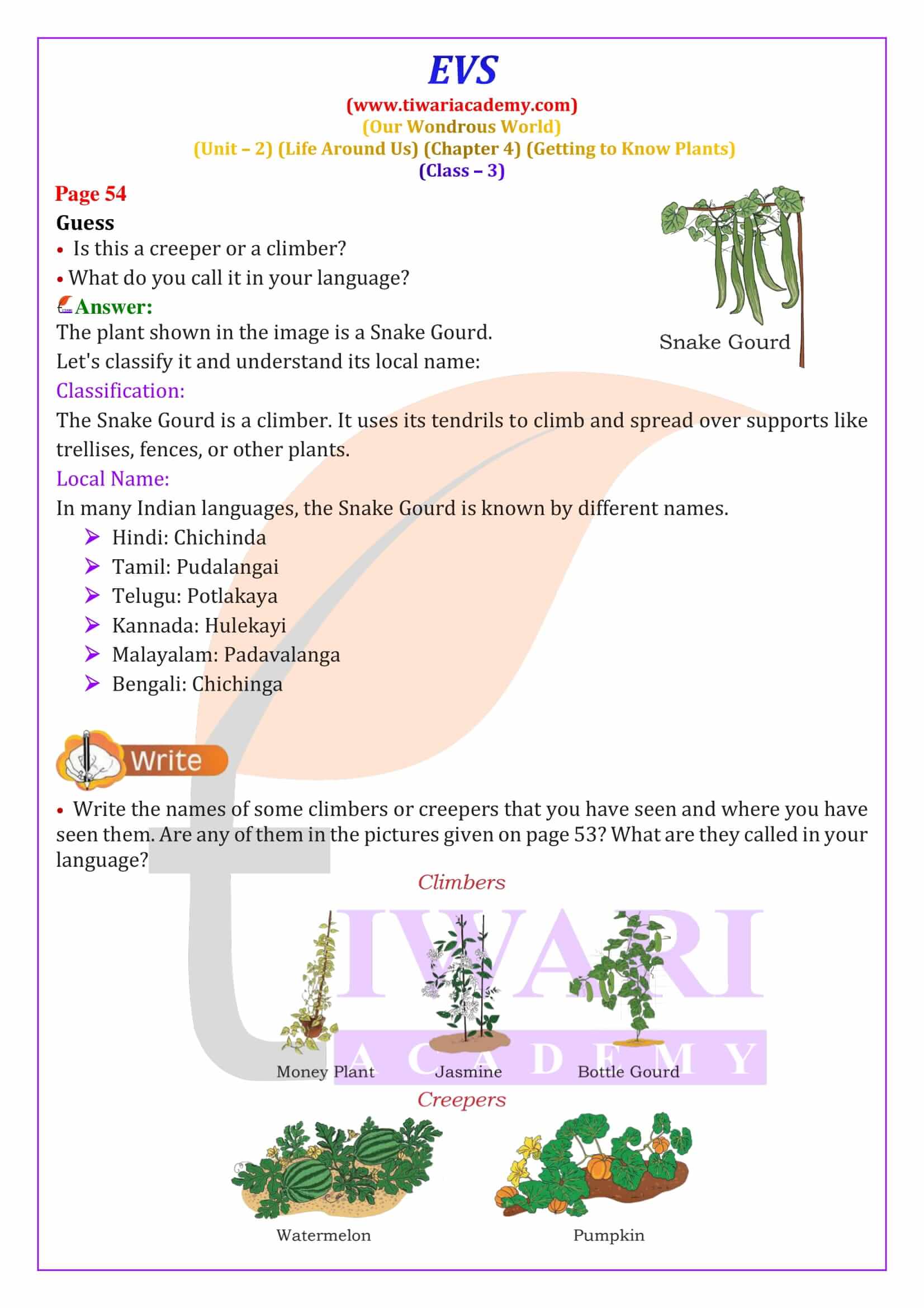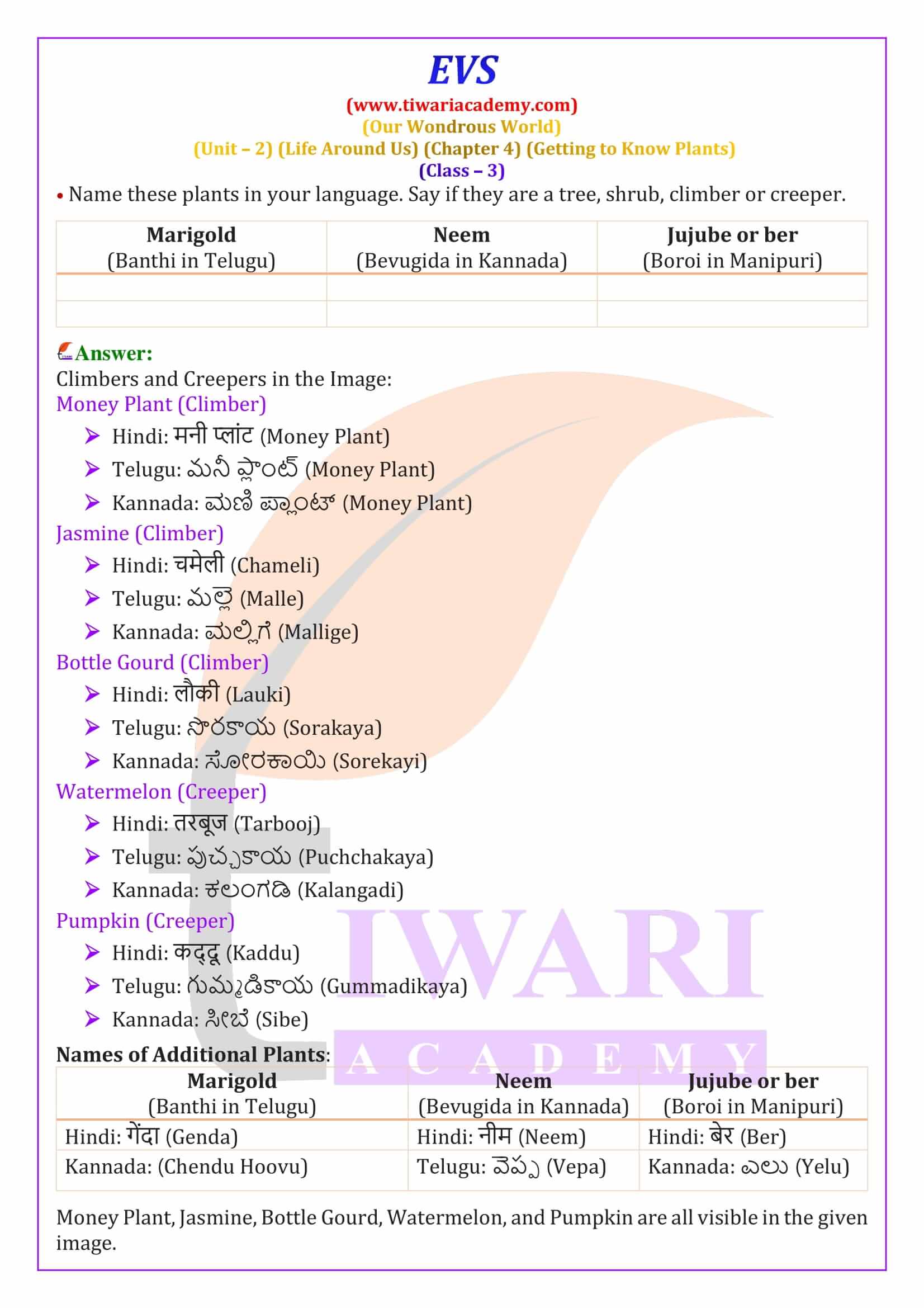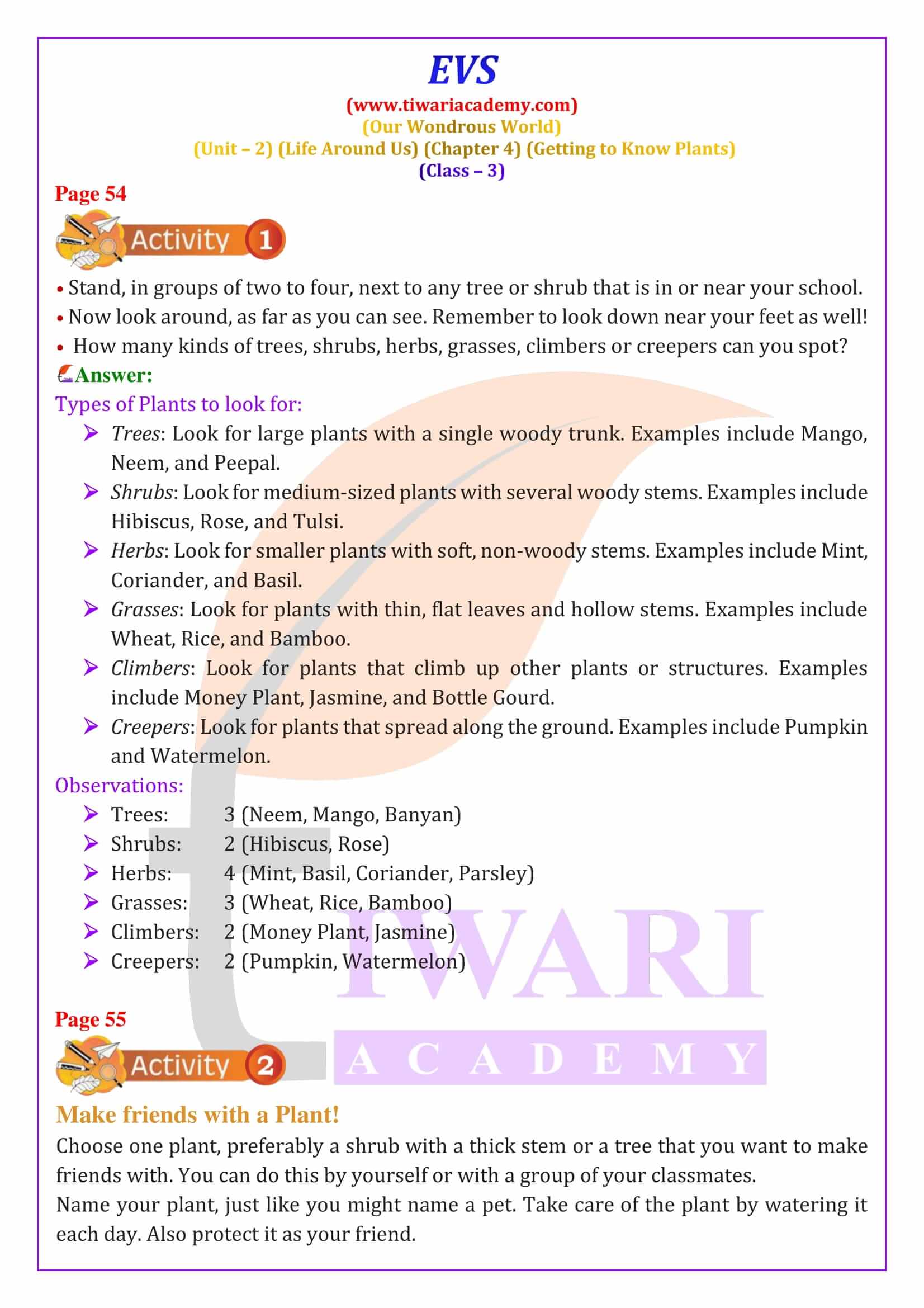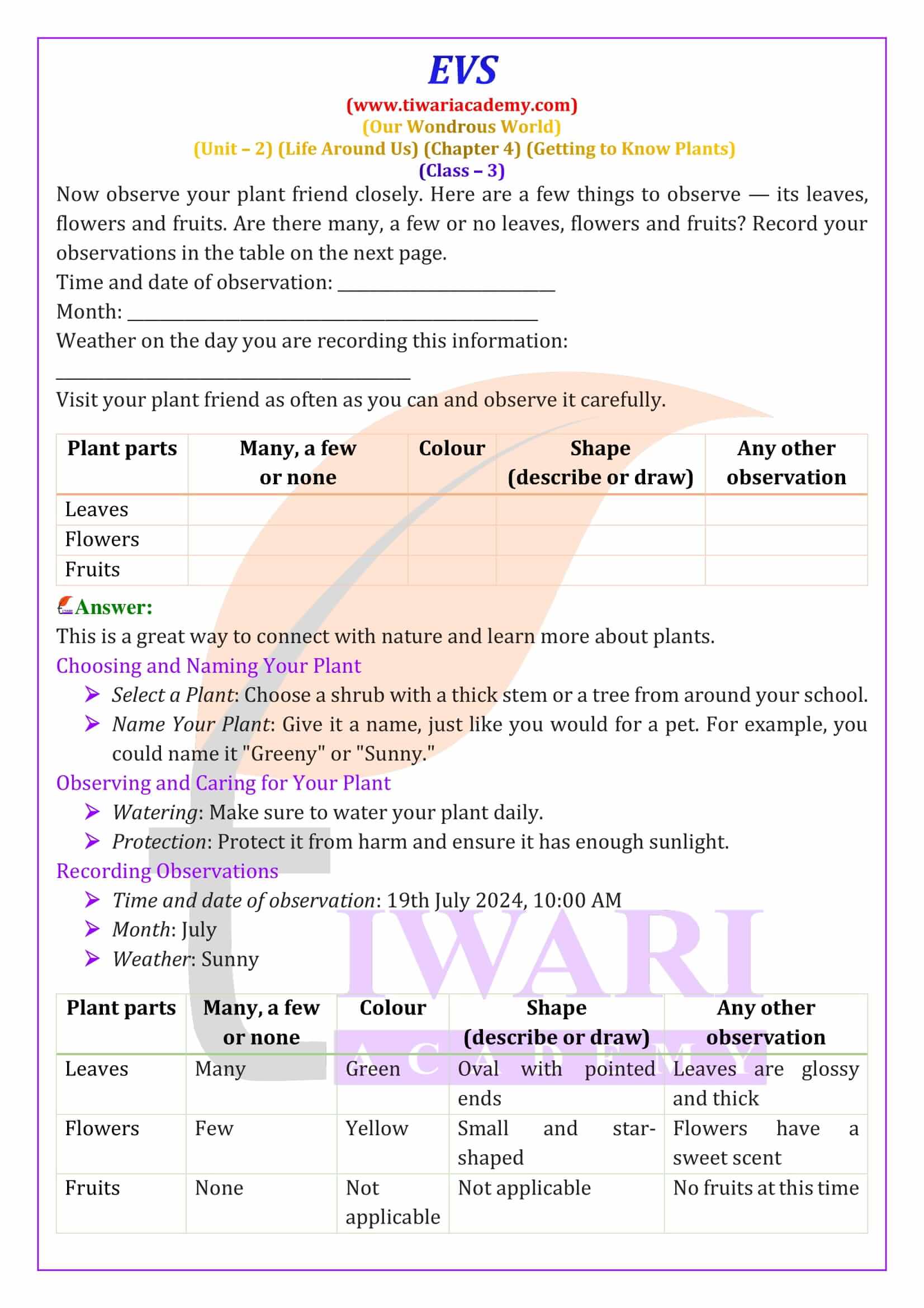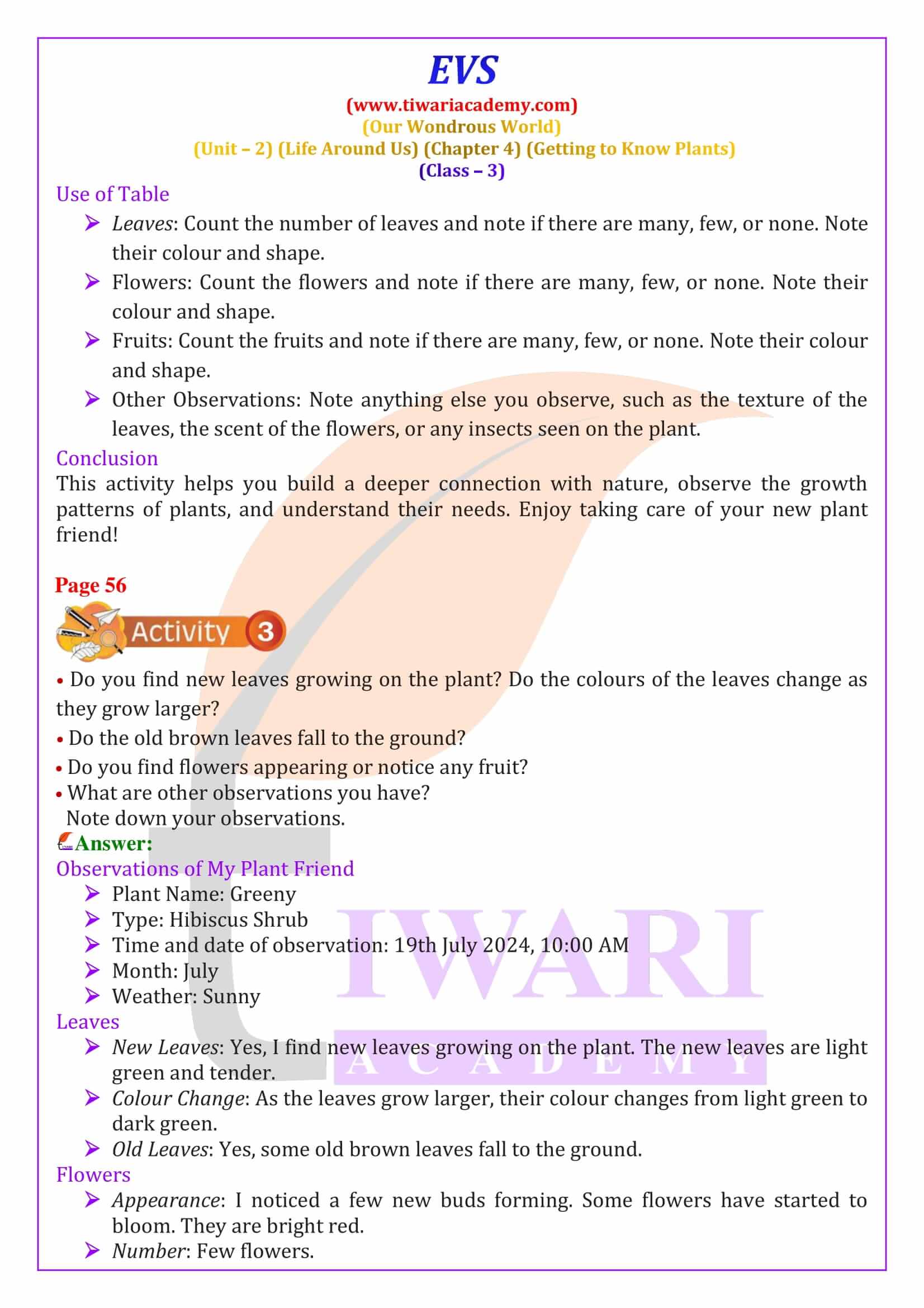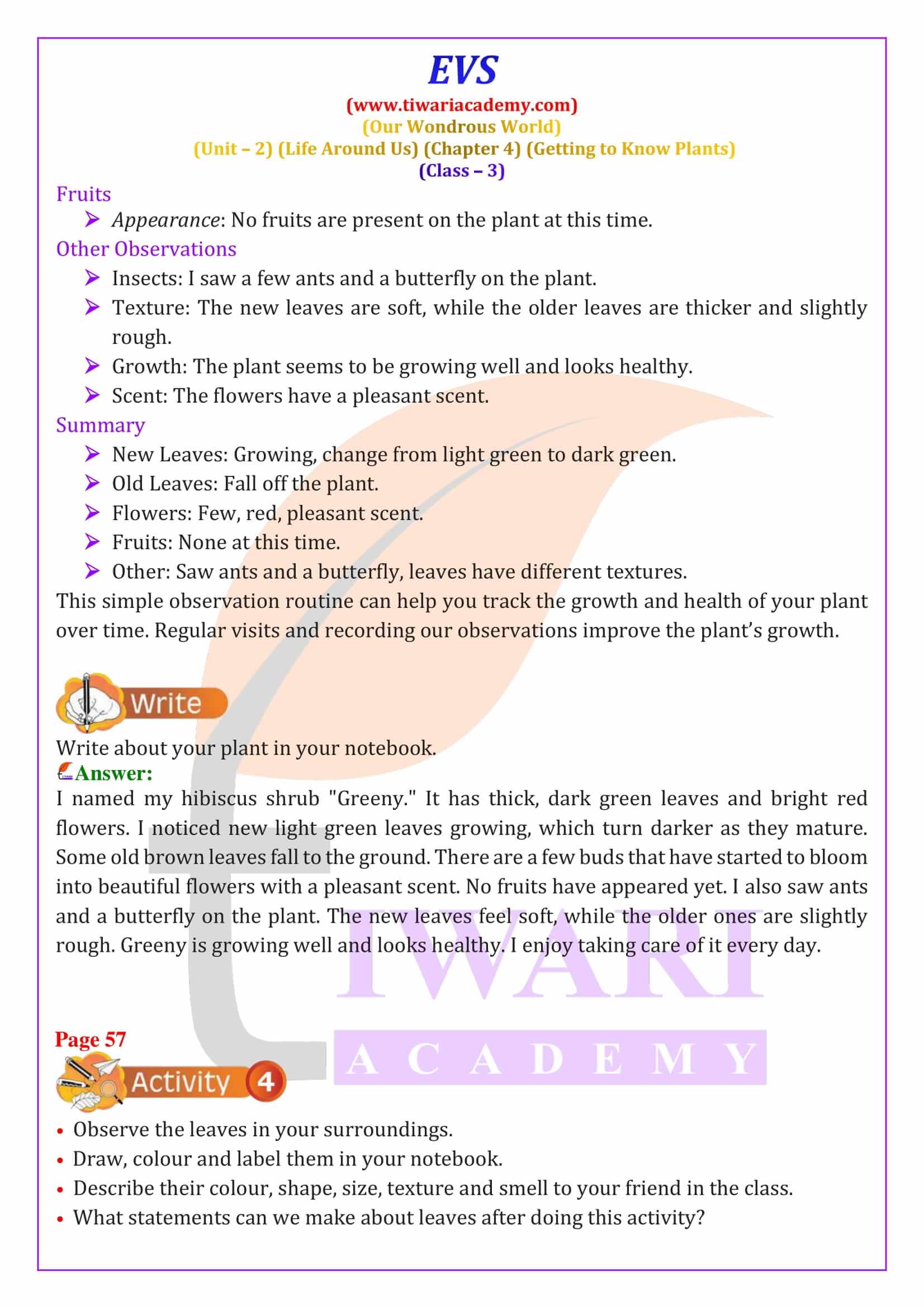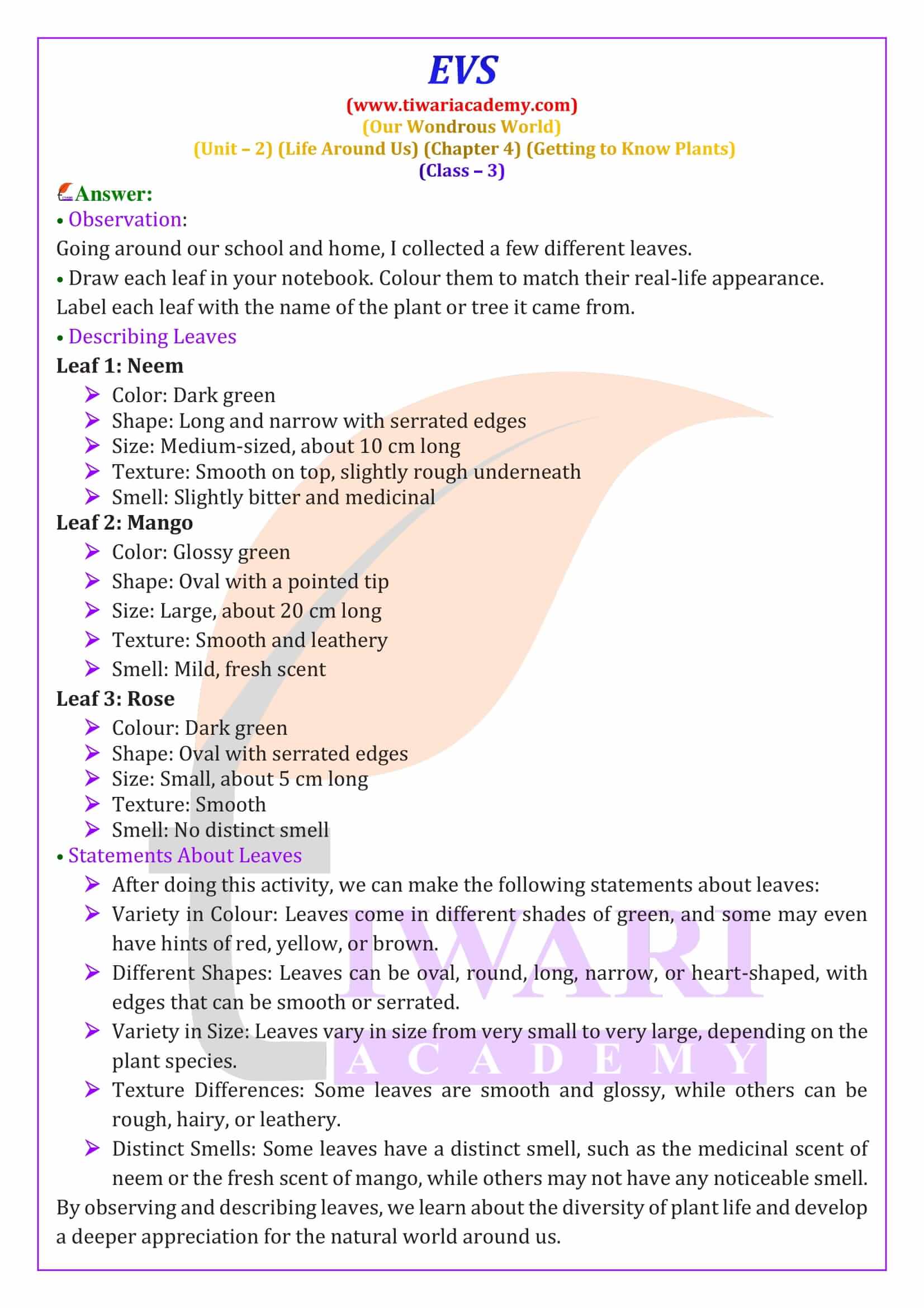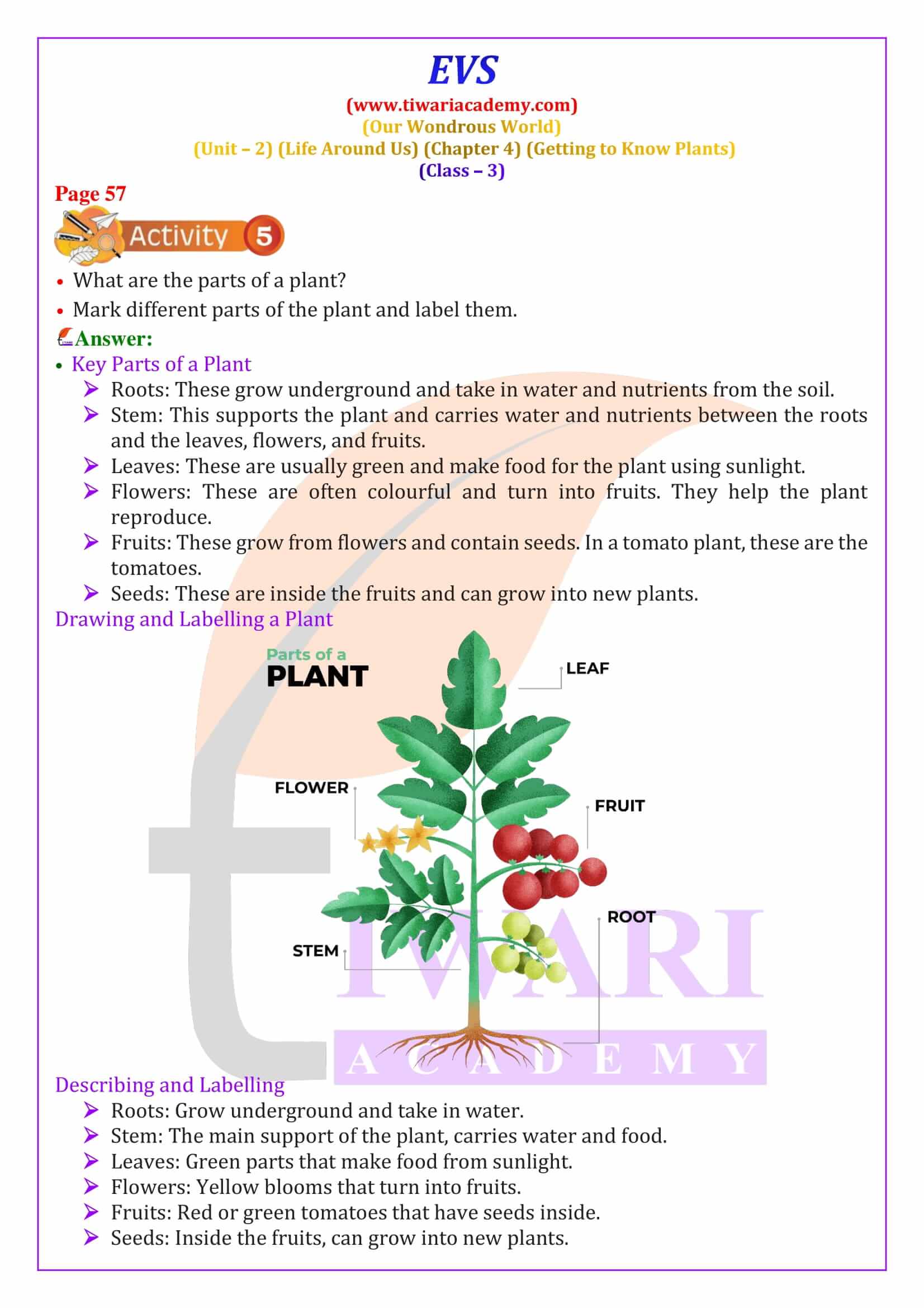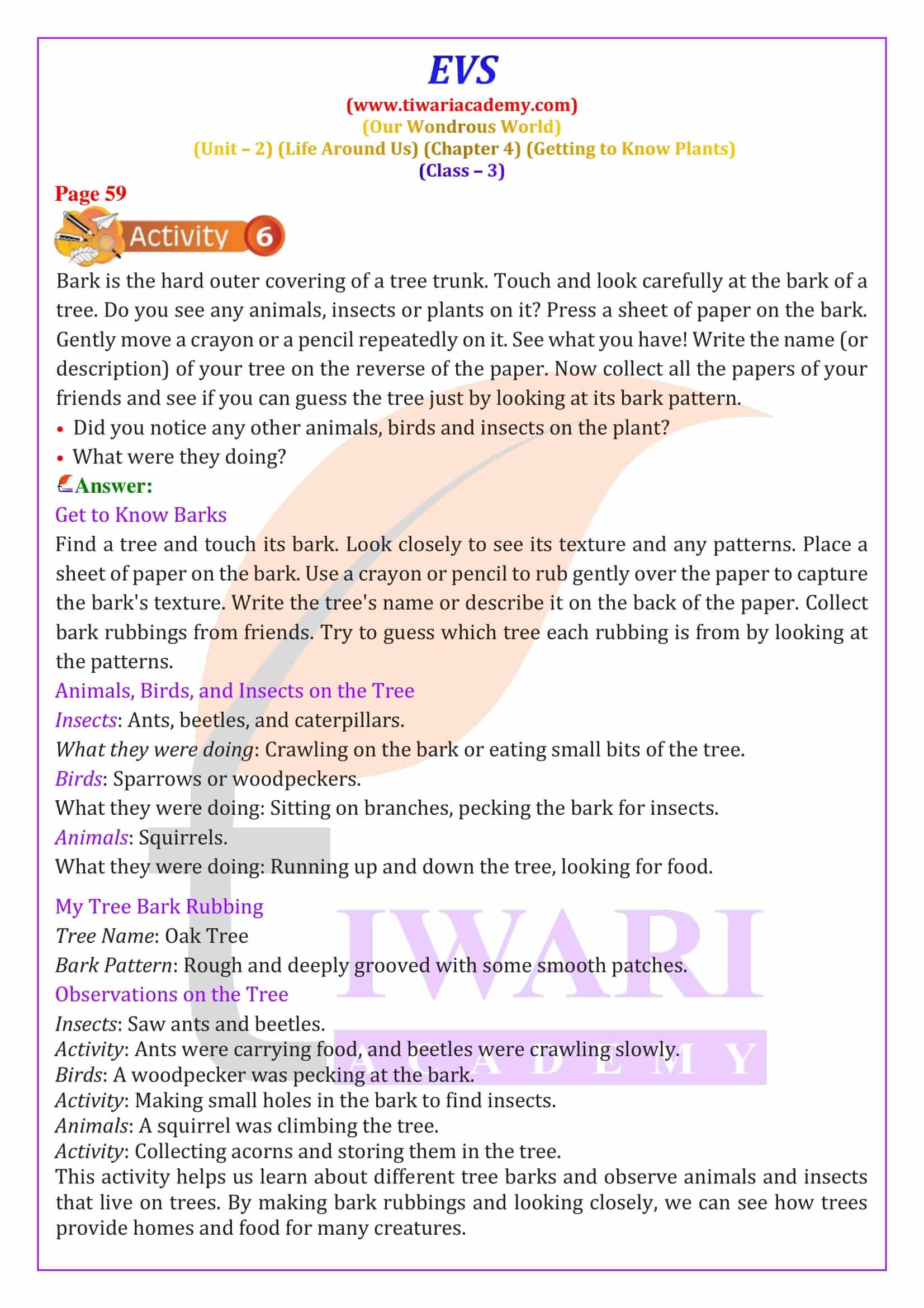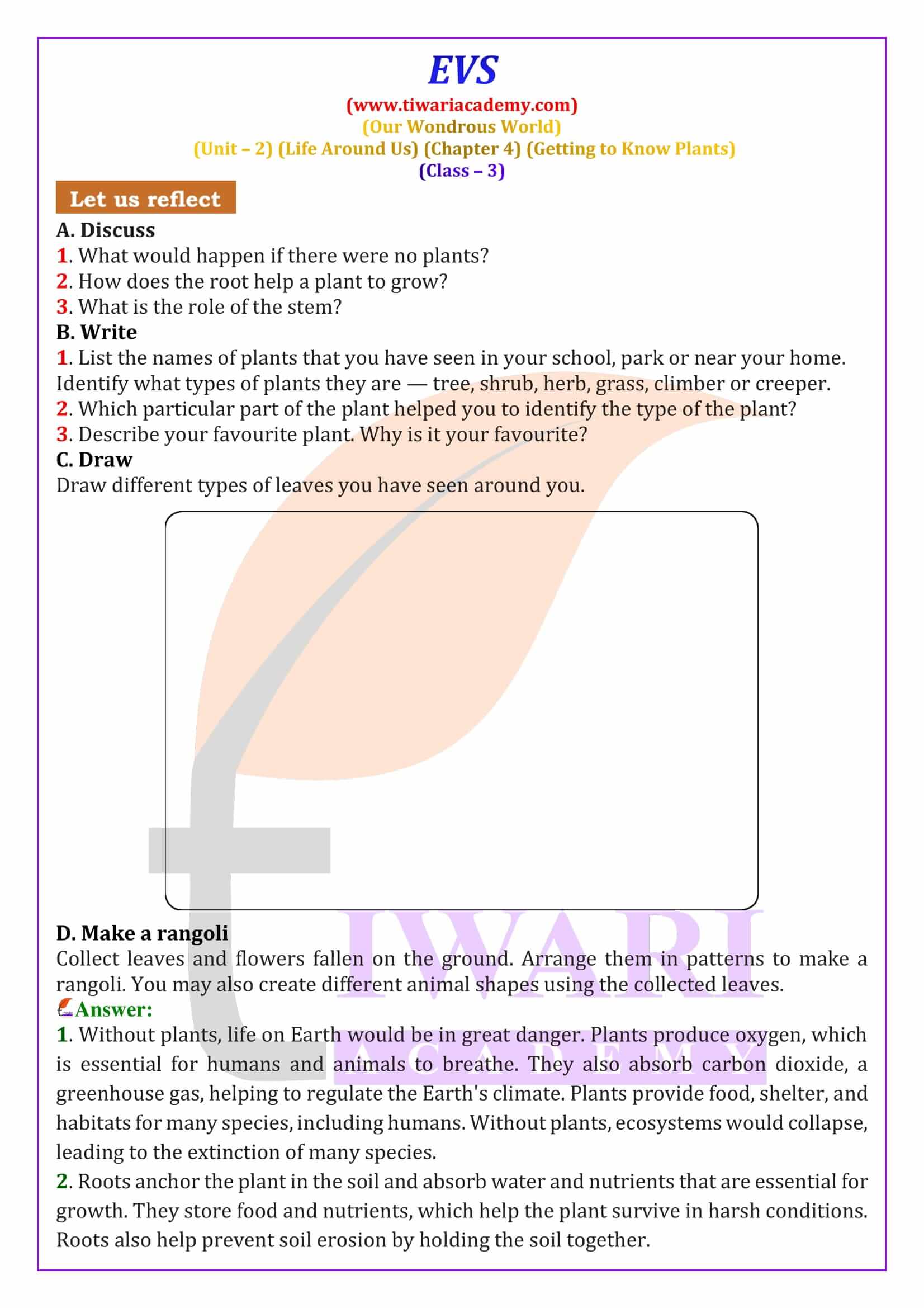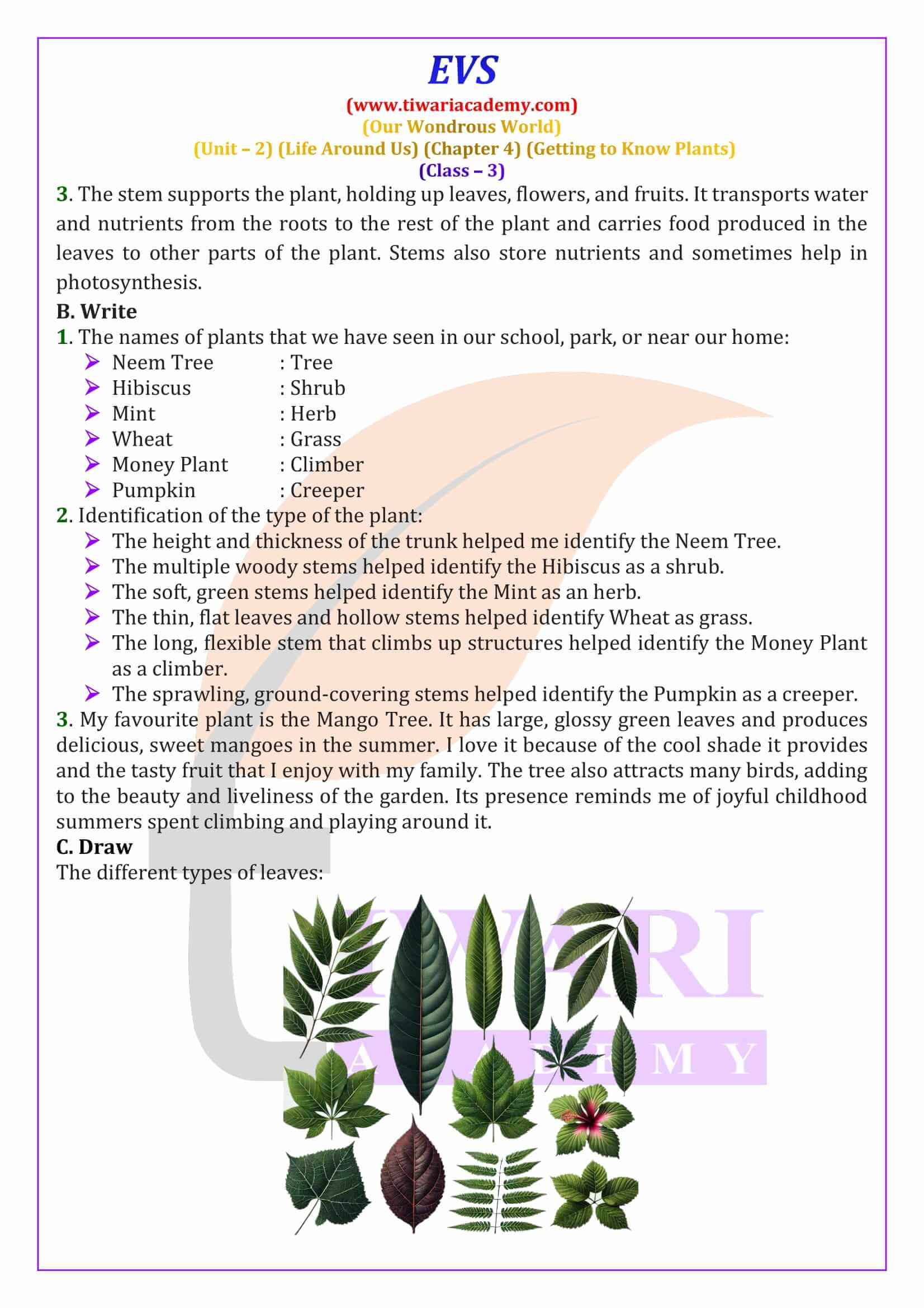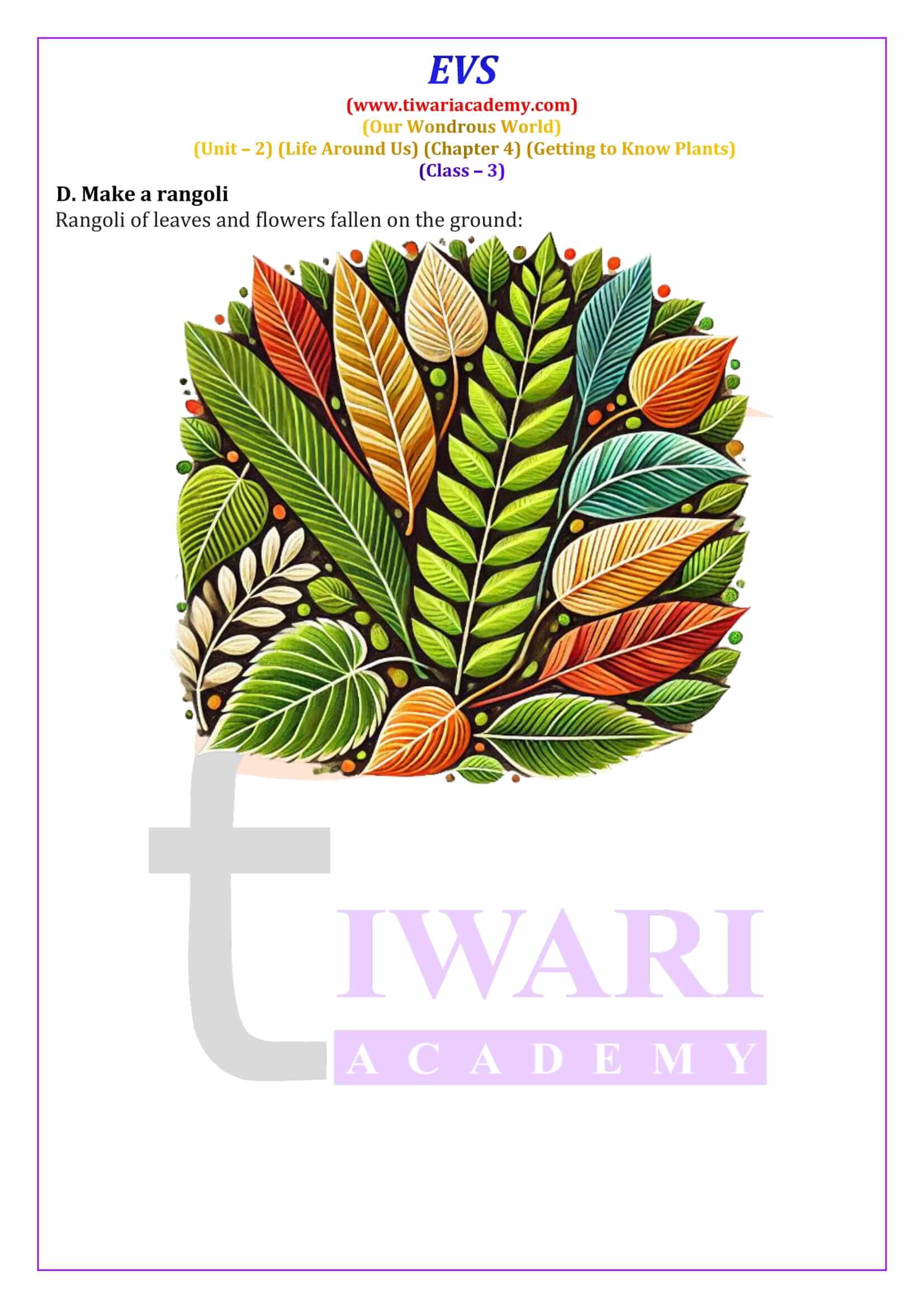NCERT Solutions for Class 3 EVS Chapter 4 Getting to Know Plants, based on the Our Wondrous World textbook updated for the session 2025-26. It takes students on a journey into the plant kingdom. Class 3 EVS Chapter 4 covers different types of plants, their parts and their role in the ecosystem, encouraging students to appreciate and protect plant life.
Class 3 EVS Chapter 4 Getting to Know Plants Question Answers
Exploring the World of Plants
In Chapter 4 of the Class 3 EVS book Our Wondrous World, we begin our journey of getting to know the wonderful variety of plants around us. Gopu, Simmi and Raj, the characters in the chapter, guide us through this exploration as they notice different plants on their way to school. They see tall trees, small shrubs, soft grasses, and much more. This chapter teaches us that plants come in all shapes and sizes, each with its unique characteristics.
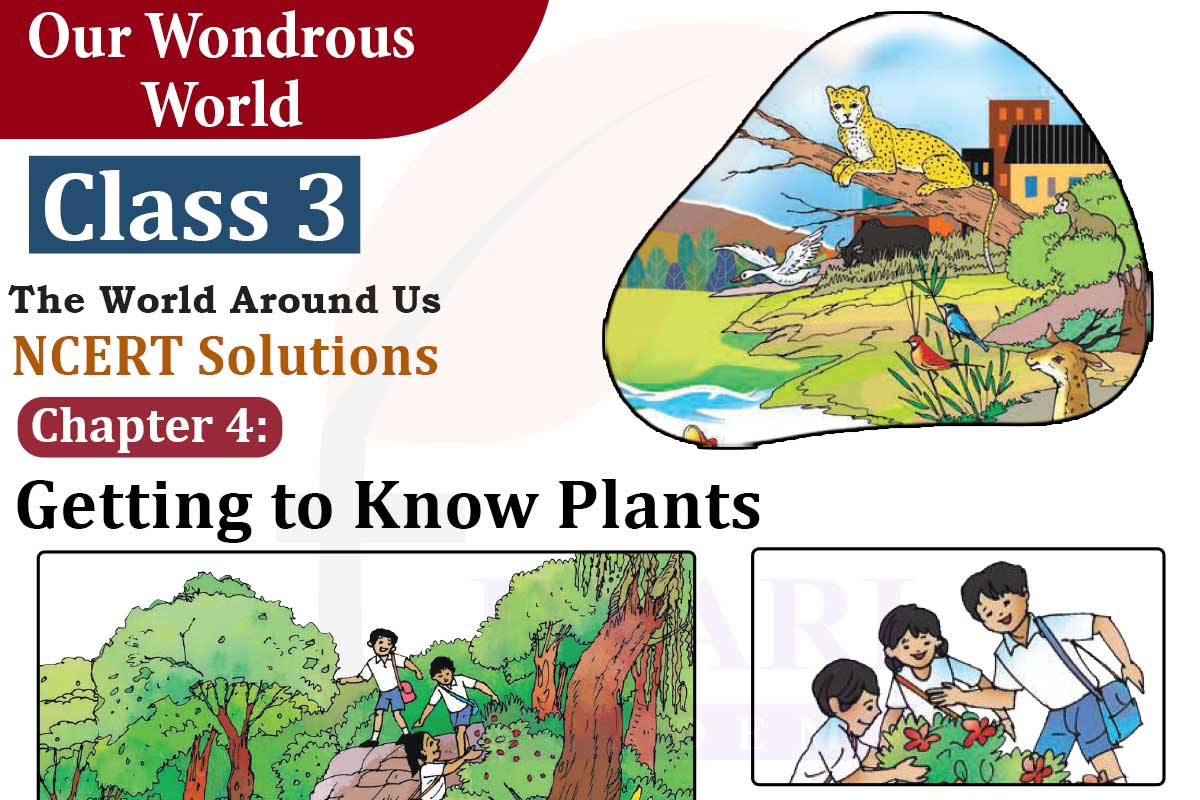
Discovering Trees
Trees are the giants of the plant world. They have strong trunks, roots that dig deep into the soil, and branches that reach out with leaves. The chapter introduces us to different trees like the Mango, Banyan, and Peepal. Each tree has its unique features; for example, the Banyan tree has aerial roots that hang down like ropes. Trees provide us with shade, fruits, and fresh air, making them very important in our lives.
Understanding Shrubs
Not all plants are as tall as trees. Some, like the Hibiscus and Rose, are smaller but still have woody stems. These are called shrubs. Shrubs are usually bushy and have several branches growing close to the ground. They might not be as tall as trees, but they are just as important. Shrubs can have beautiful flowers and are often found in gardens.
Learning About Herbs and Grasses
Herbs are even smaller plants with soft and green stems, like Mint and Tomato plants. These plants do not have woody stems, making them easy to bend. Grasses are a special type of herb, with long, thin leaves and hollow stems. Grasses are all around us, in fields and lawns, and even the grains we eat like wheat and rice come from grasses.
Exploring Climbers and Creepers
Some plants do not stand up tall like trees or shrubs. Instead, they climb up other plants or spread along the ground. These are called climbers and creepers. For example, the Money Plant climbs up walls, while the Pumpkin plant spreads its branches on the ground. Climbers and creepers have thin, flexible stems that need support to grow.
Parts of a Plant
Every plant, whether it is a tree, shrub, herb, or climber, has different parts like roots, stems, leaves, flowers, and fruits. Each part has a special role in helping the plant grow. For example, roots absorb water and nutrients from the soil, while leaves make food for the plant using sunlight. Understanding these parts helps us appreciate how plants live and grow.
Observing and Caring for Plants
The chapter 4 encourages students to observe plants closely. By looking at leaves, flowers, and stems, students can learn more about the different types of plants around them. The book even suggests making friends with a plant, giving it a name, and taking care of it. This helps students understand the importance of plants in our world and how to care for them.
All the questions, answers and solutions for Chapter 4 are available on Tiwari Academy. Visit the Tiwari Academy website to explore more about this chapter and test your understanding with the solutions provided.
